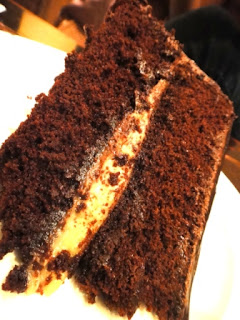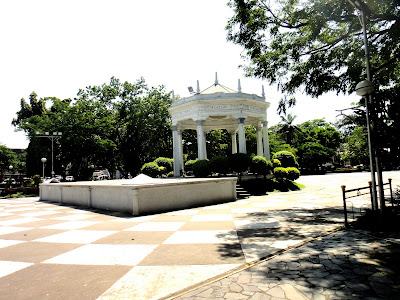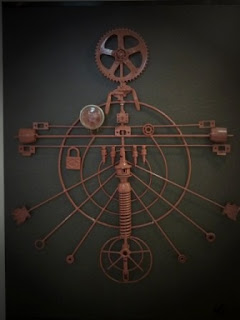We had half the day to go around Bacolod City. In the hotel, I inquired about a city tour that was being offered. It cost about P2,000 each! Which was way way way too much. Map in hand, we decided to get to know the city ourselves.
From
Manokan Country, we went to SM because Sandra had to pay her cellphone bill. Their SM is the usual, but it had signs of the Panaad Festival all over the place.
From SM, a few minutes walk away, is the San Sebastian Cathedral.
The San Sebastian Cathedral is an old church. It was built using egg whites. Inside the church:
Candles for prayers. Their candles are different from the usual ones in Cebu...and more expensive too. But you can also use your own candles or buy from one of the vendors nearby.
In the church courtyard, the centennial belfry are displayed.
They don't use it anymore. I don't know if it still works though. This is the inside of one of the bells. Someone hanged his / her bag inside.
After saying our prayers, we walked across the street to the Bacolod Public Plaza.
We rested for a while under the shade and this white Christian guy gave us this pamphlet:
Next stop was the Dizon-Ramos Museum along Burgos Street. We actually walked there from the public plaza because we weren't sure how to commute. It's not that far though. About 10-15 minutes walk. Entrance fee is P30, and you get a tour guide.
It's the ancestral home of Raymundo Dizon and Hermelinda Ramos, hacienderos who belonged to the upper crust of Negrense society. They've long gone and passed away. Their son, who's a priest, has converted the old house into a museum. Aside from the family collections, the museum also display art from other artists, some for sale. When we got there, there was a Maskara display in the front desk area, which was a separate building from the house.
They still kind of freak me out, but they're really beautiful masks. Very detailed and very well-done. Some are worth a few thousand pesos. Some aren't for sale. Each one is unique and a lot of people buy them as collector's items or for display. This one was the freakiest:
There was a Chinese art on display also.
At the foot of the stairs leading to the living room is this wood sculpture from Baguio.
You go up the stairs to enter the main living area of the house. On display here are the original furniture and things that the family used during the life of Mr. and Mrs. Dizon-Ramos, Negrense hacienderos who belonged to the upper crust of society.
Under the main living area is what used to be the office and storage area of the family for their business. Now, it's being used as display areas, not only for the family's things, but also for other pieces of art. When we went there, there were modern / scientific art on display such as this one:
There was a room dedicated to the Holy Land. One of the children, who was a priest, spent a few years in the Middle East and had a vast collection of memorabilia and other collectibles. The room even had murals done by a local artist.
Another room had toys on display. These 2 dolls stood out.
After the Dizon-Ramos museum, we decided to make a stop to the Sto. Niño shrine. Being Cebuanos, we felt that it was just one of the things that we needed to do. Unfortunately, the place was closed.
Our next stop was the Negros Museum. From the Sto. Niño shrine, you just have to walk to the corner to Burgos Street, and take 2 jeepney rides to the museum. We got lost when we rode the wrong jeep, but the locals are very very friendly. We eventually found our way.
The entrance fee is only about P60 or less. If you're a student, it's cheaper. And that comes with a guide. You can only take pictures of the ground floor, though.
Here, you will learn a lot of Negrense history. From the pre-Spanish to the modern times. There's even an old manual record player that the guide will play for you using an improvised needle. Sadly, the museum couldn't afford to have it fixed. On the brighter side though, it shows people (especially the kids that go there), that you don't really need all those electronics to have fun or to play music.
We ended our city tour by watching the sun set and walking around the Lagoon Park. A lot of locals visit the park, as well as jog around the lagoon. The lagoon has thousands of fishes, which I think you're allowed to feed. There's also a playground. If you're worried about security, there are guards posted around the place, so it's relatively safe.
(Photo credits: Badz, Sandra)

































































